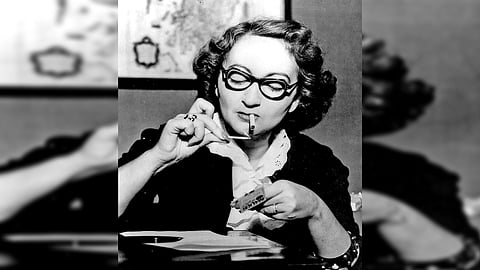

Alba de Cespedes y Bertini (1911-97) was born in Rome, the daughter of a Cuban diplomat and his Italian wife. Her grandfather helped lead Cuba’s fight for independence and served as its first president, and she kept alive her family’s political commitment, often running afoul of Italy’s Fascist regime.
The government banned two of her novels, including “Nessuno Torna Indietro,” or “There’s No Turning Back,” which, published in 1938, became a best seller and was translated widely. De Cespedes was imprisoned twice for anti-Fascist activities, first in 1935 and again in 1943, after she had joined a resistance radio program, broadcasting from Bari under the pseudonym Clorinda.
By the 1950s, she was known throughout Italy. For years she wrote a popular advice column, tackling questions about marriage, infidelity and love with meditations on art and philosophy. These columns steered readers toward a modern, more secular morality, one that stressed women’s equality. Her private life was the stuff of rumors — according to one she’d been married to a count as a teenager but had the marriage annulled. Which makes her virtual disappearance from the literary record today all the harder to fathom.
Until recently, it’s been difficult to find her work, even in Italian. De Cespedes has been dismissed as a “romance writer,” perhaps owing to her subject and primary readership (women), her gender or all three.
The Italian publisher Mondadori reissued some of her books over the past few years, and this fresh translation of “Forbidden Notebook” promises a new cohort of readers, appetites whetted by the works of Elena Ferrante, Elsa Morante and Natalia Ginzburg. Ann Goldstein, who translates Ferrante’s writing and has a particular skill for conveying the full power of a woman’s emotional register, for locating an undertow of wrath or grief even in stated ambivalence, has reinvigorated the text, starting with the title: A 1958 English edition was called, rather flatly, “The Secret.” Still, The New York Times’s reviewer called de Cespedes “one of the few distinguished women writers since Colette to grapple effectively with what it is to be a woman.”
De Cespedes found a lifetime of work in the question. After World War II ended, she returned to Rome and edited a literary journal, Mercurio, that published such writers as Jean-Paul Sartre, Ernest Hemingway and Alberto Moravia. In its final issue, which appeared in 1948, she published an essay by Natalia Ginzburg called “On Women,” which explored whether women — with an innate tendency toward melancholy and despair — could ever achieve true freedom.
“I, too, like you and like all women, have a great and ancient experience with wells: I often fall in and I fall in with a crash,” de Cespedes wrote privately to Ginzburg. “But — unlike you — I think that these wells are our strength. Because every time we fall in the well we descend to the deepest roots of our being human, and in returning to the surface we carry inside us the kinds of experiences that allow us to understand everything that men — who never fall into the well — will never understand.”
Visit news.dtnext.in to explore our interactive epaper!
Download the DT Next app for more exciting features!
Click here for iOS
Click here for Android